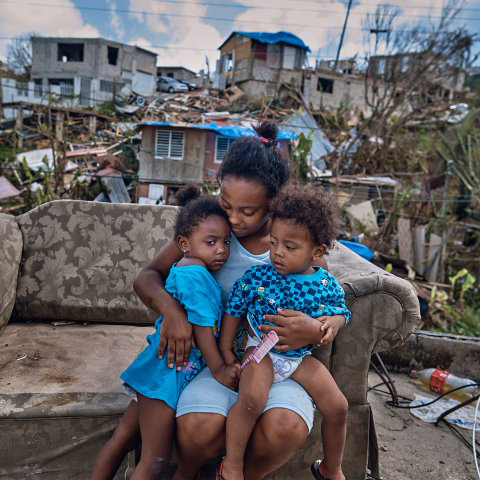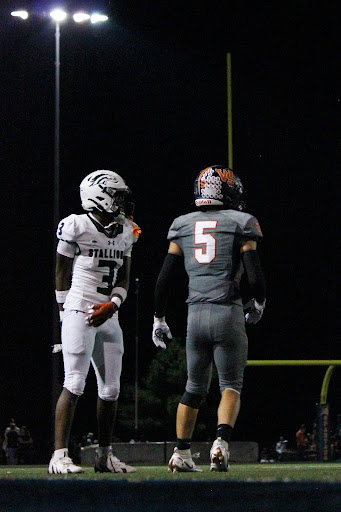Hurricane leads to heartbreak in Puerto Rico

Photo courtesy of Time Magazine
A mother embraces her two daughters in the middle of complete destruction as a result of Hurricane Maria.
November 30, 2017
Hurricane Maria touched down in Puerto Rico in late September and left a trail of destruction in its wake. Today, the citizens of the U.S. territory are still reeling from the aftermath of the storm.
Because the hurricane wiped out the island’s power grids, many people continue to lack access to clean water and electricity. Over 50 percent of the island is currently living without power. Thousands of people remain in shelters or in homes without adequate roofs.
“I was heartbroken to see and hear about all the destruction that a giant category four hurricane brought to such a small island like Puerto Rico,” said senior Justin Graziani.
Although Hurricane Maria occurred less than a month after Hurricane Harvey devastated Texas, many claim that the federal government responded differently to the two natural disasters. In contrast to Harvey, relief efforts for Maria involved fewer personnel on the ground, fewer donations, and less attention from the media and the public.
“I feel like the response was worse [for Hurricane Maria] because many Americans didn’t even know that Puerto Rico existed to begin with,” said senior Isabel Lopez, who has family that lives on the island. “And those that did didn’t know that Puerto Rico is a U.S. territory.”
Many also argue that the response to Hurricane Maria has been slower because of the larger distance to cover between the United States mainland and Puerto Rico and also because communication with the island went down when the power went out.
“I think the U.S. government responded to Texas better because it’s closer and in America, but they still should’ve done more to help Puerto Rico because it’s still a part of the United States,” said freshman Ashley Petrus. “I think the damage was worse [in Puerto Rico] than in Texas, so they needed more help.”
Amongst the process of rebuilding the territory, debates have begun to ensue over whether Puerto Rico and other U.S. territories such as Guam should become states or not. Those against the idea claim that there is not enough support amongst Congress or the American public to make this happen. Others argue that the territory would have been better equipped to handle the devastating impacts from the hurricane if it had been a state, like Texas.
“I do think [Puerto Rico] should become a state because they are already pretty much a part of the U.S, but they do not have the official title of state,” said Graziani. “They pay taxes to the U.S. like any other state.”
Recovery from the storm has been slow and filled with obstacles. The death toll from Maria has recently risen to 51 people, although the number is expected to continue to grow due to a growing infection called leptospirosis, which spreads after floods through contaminated water.
In addition, the economic crisis that Puerto Rico is in dampens the island’s ability to fix the damage quickly. Officials have estimated that the overall hurricane damage could range from $45 billion to $95 billion on an island already embroiled in an 11-year-long recession.
“[The financial crisis] was bad before the hurricane and it’s gotten so much worse after,” said Lopez. “If the government takes action on helping Puerto Rico with its debt and finances, then I believe Puerto Rico has a higher chance of recovering faster.”




